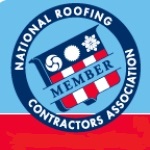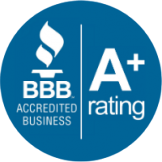Hicksville Roofing: Article About Removing Snow From Your Roof
These are electric cables that run along your roof's gutters and downspouts. When it starts to snow, these cables can be turned on to heat up the area and melt snow and ice. They are used to help prevent ice dams on roofs.
Hicksville roofing contractor answers a question: What is the best kind of roof rake to buy?One of the most important factors to look at when purchasing a roof rake is whether or not it has bumpers to protect the blade from damaging your roofing shingles. If it does not have rubber bumpers, choose a plastic roof rake, rather than a metal one. This way, you will do less damage to your shingles if you scrape too hard.

If your home has a low-sloping roof, it is crucial that you remove any snow that has accumulated beyond three or four inches. Otherwise, you take the risk of winter weather causing damage to your home because of built-up ice dams and water leaks.
Before you begin recklessly raking the snow off your roof, it is important to carefully assess the situation. You certainly do not want your roof rake to snag a loose piece of flashing or cause damage to any of your shingles. Purchase a roof rake that is equipped with bumpers on the blade so it never makes full contact with your roofing shingles. Obviously, while there is snow on the roof, it is impossible to fully inspect your shingles, so perform annual inspections before the first snowfall each year. If you are unsure about the condition of your roof, but you need to rake off the snow, proceed with caution to avoid causing unnecessary damage.
While raking your Hicksville roofing, keep in mind that hanging icicles can be very hazardous when they fall or begin to melt off the edge of your roof. If your roof's overhang is lined with icicles, they need to be removed before someone or something gets hurt. When the coast is clear, you can remove them with your roof rake, but do not attempt to do this if your need to stand dangerously close in order to reach them. Using a pole extension on your roof rake's handle can help with this, allowing you to stand further away from the edge of your roof so you do not risk getting hit with any of the falling icicles.
Have a question regarding TPO roofing or EPDM rubber roofs? Ask Long Island Roofing of Hicksville NY.
Another option for preventing ice dams and snow build-up is using heat cables on your roof. Some homeowners have very good luck using these near overhangs, gutters, dormers and anywhere else that is prone to snow and ice build-up. However, keep in mind that heat cables will not completely eliminate the need for roof raking. There are a few of drawbacks involved with using heat cables, though. First, they are typically quite expensive to run because they use a lot of electricity. Second, many people make the mistake of thinking the heat cables will solve all of their wintertime roofing responsibilities. Most residential roofing heat cables on the market are not powerful enough to take care of a large amount of snow. They are usually recommended only for use in areas on the roof that need a little extra attention in the wintertime or spots that are hard to reach with a roof rake.
For homes with a flat roof or a very shallow slope, sometimes the most effective way to remove snow is with a shovel. If you are able to safely access your flat rooftop in the winter, your best bet is to go up there and shovel it off yourself. This will also give you a bird's eye view of how your roof is faring against winter's blustery conditions.









